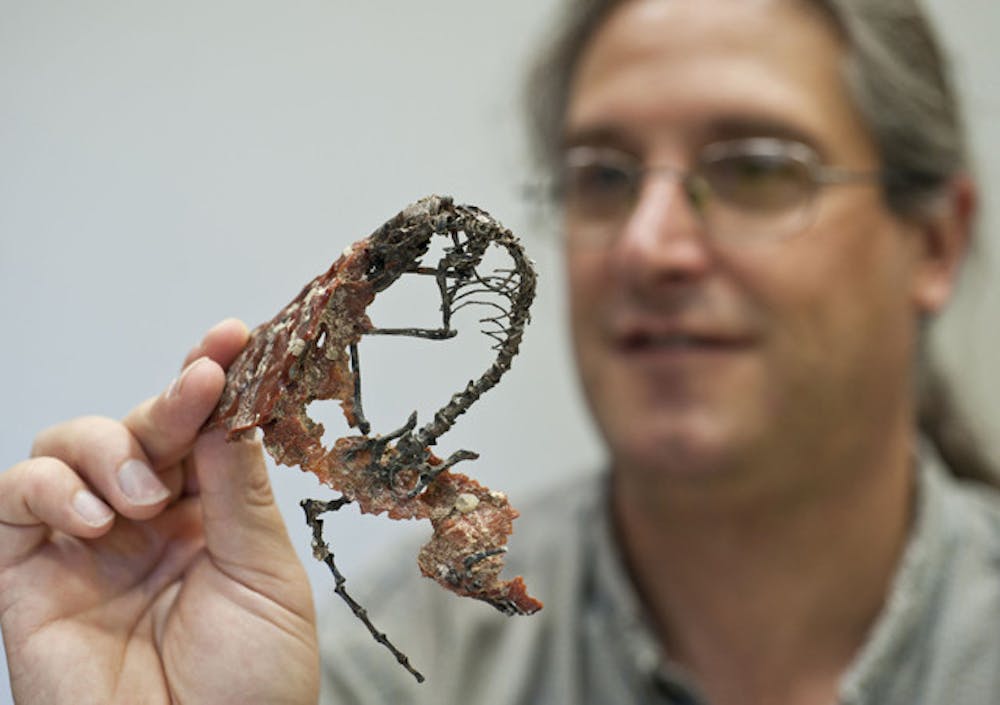A small, 55-million-year-old, tree-climbing rodent might be distantly related to you.
A study co-authored by a UF researcher that describes the cranial anatomy of the now-extinct species was published Oct. 11 in the Zoological Journal of the Linnean Society.
Researchers have found that Labidolemur kayi shares a common ancestor with tree shrews, rodents, lemurs and primates.
“This gives us a window of insight into the pattern of evolution that led to humankind,” Doug Boyer said during a phone interview.
Boyer, who is a co-author of the study, is the assistant professor of anthropology and archeology at Brooklyn College. He said the study was prompted by the most complete skeleton of the species ever found.
When they find a Labidolemur, it’s usually just a tooth, or the cranium is usually squashed completely flat, said Jonathan Bloch, another co-author of the study. He is the associate curator of vertebrate paleontology at UF.
The remains were found over 10 years ago in Clarks Fork Basin, Wyo. However, removing the fossil from the limestone that surrounded it was a tedious process.
After the fossil had been prepared from the limestone it sat in, researchers took high resolution CT scans of it, Bloch said. The scans involve taking thousands of X-rays and blending them together to create one seamless image that can be viewed from multiple angles. For every inch of fossil, they take close to 1,000 X-rays.
Once all of the scans were complete, they were able to get a glimpse at what the animal looked like. It resembled a tiny squirrel with big ears, long fingers and a bare tail with a puff of fur on the end, Bloch said.
“Based on the large brain size, we were also able to tell that this animal was fairly intelligent,” Boyer said.
Using a method known as comparative morphology, researchers were even able to tell how and what L. kayi preferred to eat, Boyer said. Comparative morphology takes bone structures of extinct animals and compares them to bone structures of creatures that are living.
Bloch said that even the way the animal ate was bizarre. L. kayi used its long fingers to tap on trees and its large ears to listen. Once it found a hollow spot, it would gnaw at the bark of the tree to find grubs inside it.
It filled an ecological niche that woodpeckers now fill.
He said that another thing that makes the L. kayi species notable is the time in which they lived. Dinosaurs roamed the earth and dominated most environments until 65 million years ago when they went extinct.
“With the extinction of the dinosaurs, things really opened up,” Bloch said. “Mammals were given a much greater opportunity to excel.”
The first mammals that took over from the dinosaurs provide the basic blueprint that nearly all mammals follow to this day, Bloch said.
He said that this study focuses primarily on the skull. Within the next year they hope to have a follow-up study to analyze the entire skeleton.
Even though L. kayi shares a common ancestor with humans, Boyer emphasizes just how far back this ancestor is.
“It is really quite far down the line,” he said.






